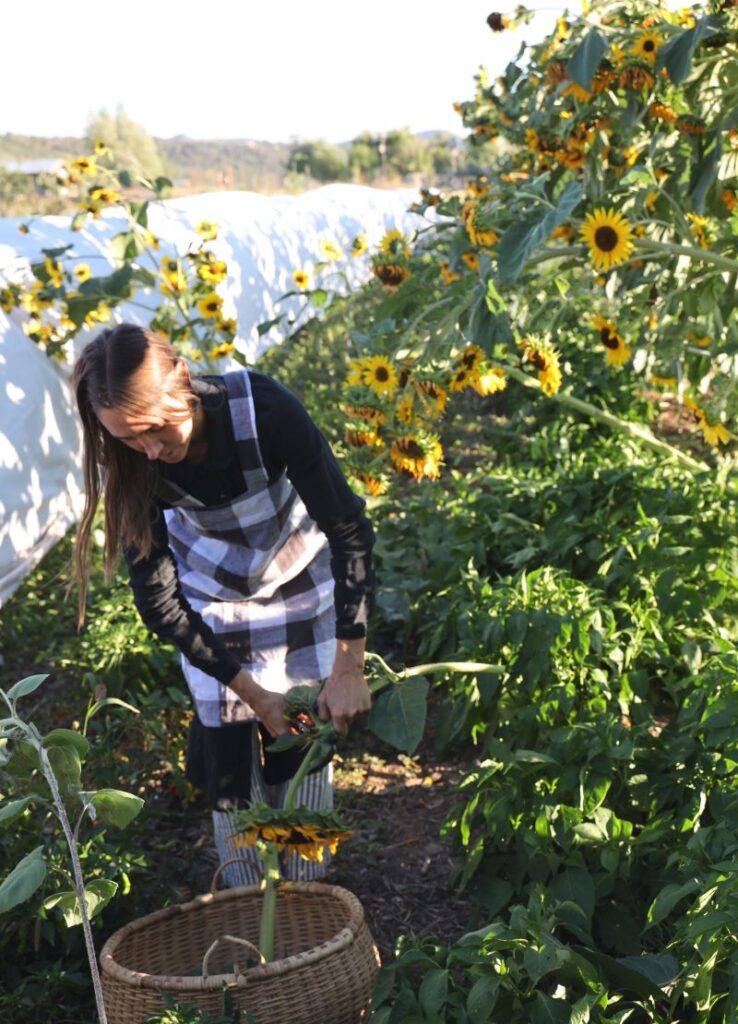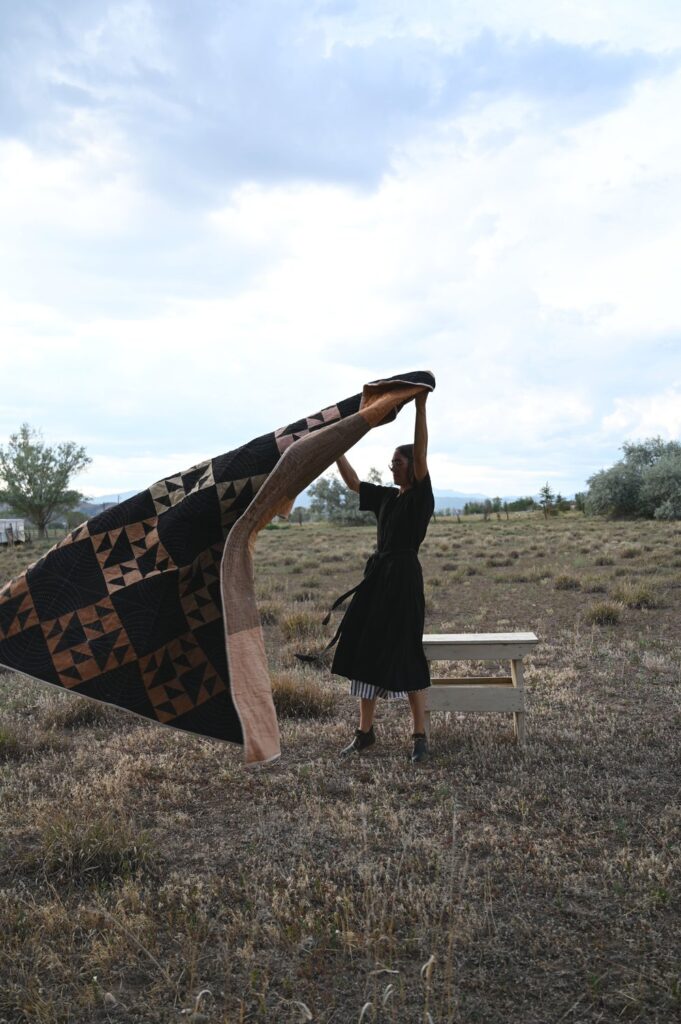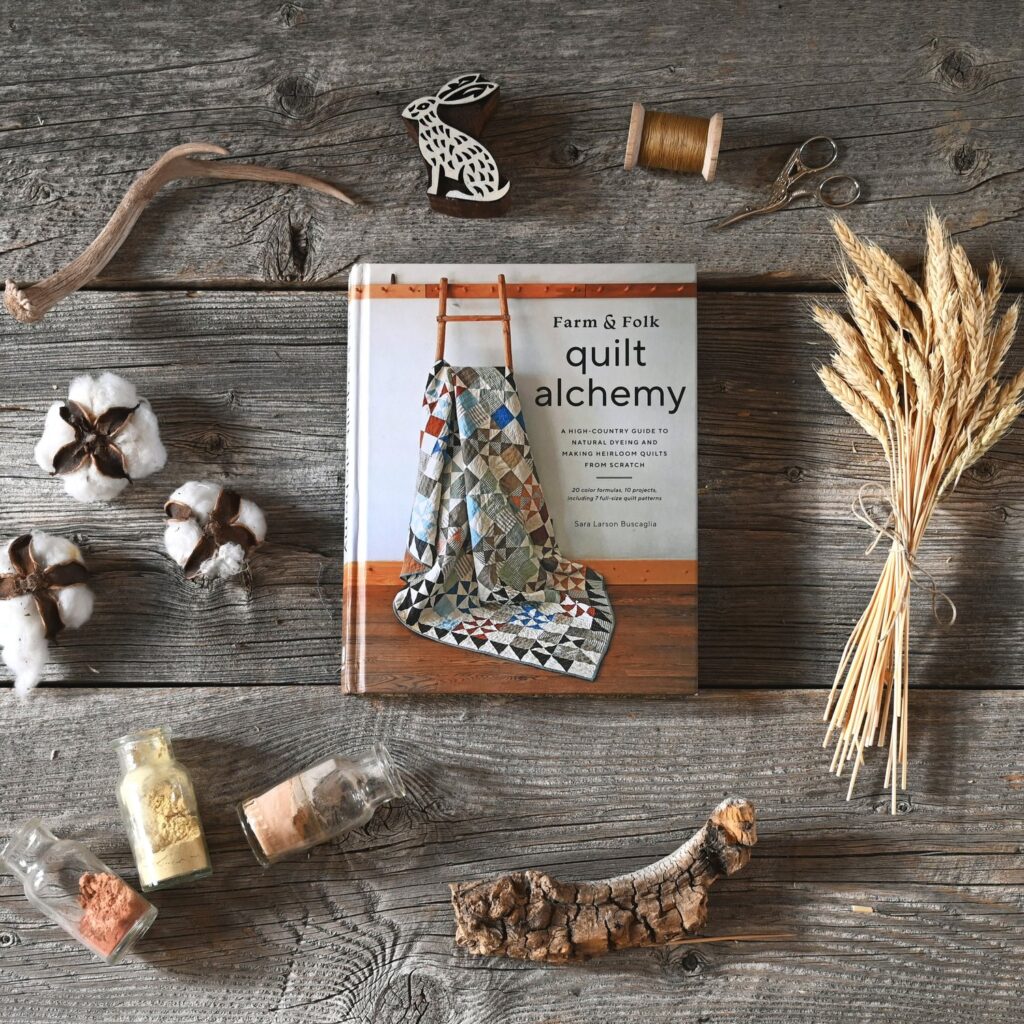
Today on Sunday Visit, we welcome Sara Buscaglia of Farm & Folk. Sara is an organic farmer, natural dyer and textile artist residing in the high desert of southwest Colorado. Her inspiration is found in the paradigm shifting slow processes of tending soil, seeds, and plants. Through her experience of being directly connected to food, natural color and fiber she has gained an understanding and appreciation of their true value. Her naturally dyed quilts are an embodiment of that.
On September 26th, Sara debuted her first book Farm & Folk Quilt Alchemy: A High-Country Guide to Natural Dyeing and Making Heirloom Quilts from Scratch. She invites readers to her Colorado farm to learn the secrets—and beauty—of making natural dyes from foraged plants and stitching natural-fiber quilts by hand.
We are so excited that she is sharing her practice for the first time in this book.
Let’s visit with her to learn more…
Talk about how farming and soil led you to natural dyes and quiltmaking.
My first time ever experiencing natural dyes and the concept of natural color was at a needle felting workshop at my son’s Waldorf preschool. I was already a farmer at this time so I had a relationship with plants as food but the concept of plants as color was entirely new to me. I was enamored by the beautiful colors and knew right away that I wanted to partake in the magic of plant dyes. Many years later when I began making quilts I was feeling uninspired with the synthetic dyed fabrics I was working with, so I began experimenting with natural dyes on cellulose fabrics. I wanted to find a way not only to incorporate natural color in my work but also color that was born of seeds and soil. Color that I could grow. I was looking for a way to incorporate farming into my art practice.

You’ve mentioned that your inspiration comes from the magic found in slow processes. Can you talk more about that?
When I began making those naturally dyed quilts, I realized that it was not only the beautiful colors I was seeking, but more so the fulfilling experience that is found in the slow processes of creating them. The magic of planting seeds in soil, and caring for the plants, all the way up to the long awaited harvest day. By the time I get to actually dye with the plants, I already have so much time invested in the process, and even more so by the time I cut into the dyed fabrics to begin piecing a quilt. This connection to the source has taught me the true value of food, and fiber, and natural color. There are so many steps that go into making a naturally dyed quilt from scratch, and I love each step of the process equally, from planting the seeds in dark soil, to that very last binding stitch.
How does landscape shape your creative muse when creating a quilt?
Landscape definitely shapes my creative muse when creating a quilt. I’m so in love with the colors of the Colorado high-desert and am constantly trying to recreate them with natural dyes. Here in southwest Colorado we have incredible landscapes to explore and experience. To the north we have the incomparable San Juan mountain range and to the south and west gorgeous desert landscapes. They’re both so different yet equally inspiring and I often intentionally feature them in my work, but also find that they show up rather involuntarily as well, and I don’t realize it until the piece is complete.

Your first book just debuted last month. What does it feel like to have a book out there representing you?
Yes, my book is out in the world now. It was such a long process creating it, and I put so much into it. It feels surreal to be here on the other side of it and to see people receiving it, and yes the realization that this book represents me feels huge. When I was writing it, I knew it was a huge responsibility. It was an opportunity to share not only my natural dye and quilt-making methods, but also an opportunity as a farmer to share the importance of organic agriculture and the concept that true sustainability is found in slow processes.
Do you have a favorite color right now?
If I had to choose one favorite color in this moment I would say sagebrush, and I share this color recipe in my book. The Artemesia variety of sagebrush is one of the most recognizable plants here on Colorado’s Western Slope. It’s unequivocally my favorite smell on earth and I bring a sprig of it with me whenever I travel. I love to pair the color sagebrush with a bright weld yellow.

We’re longtime fans of Sara and had her on FEEDBACK FRIDAY last January. Watch the recording of her presentation and fall in love with her work and Farm & Folk just a little more here. And don’t forget to get a copy of Sara’s new book here!
Check out Farm & Folk on Instagram here.
